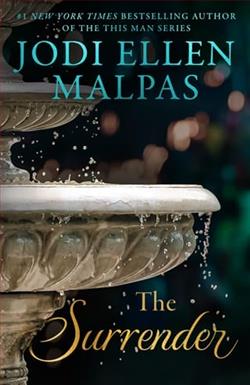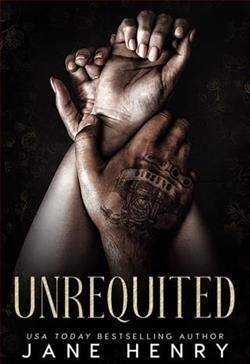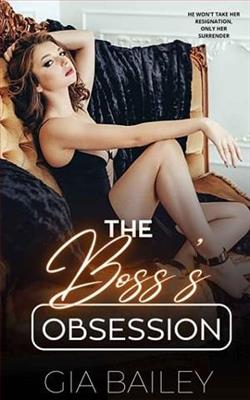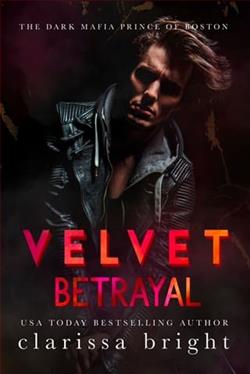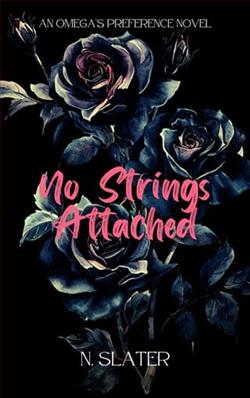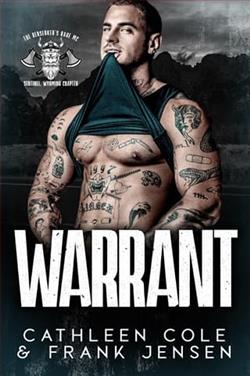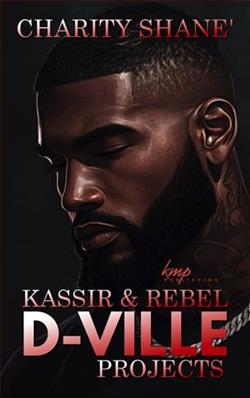Page 8 of The Lovers
Dr. Scott gave Quinn a triumphant look that nearly made her laugh. He’d really missed his calling as a stage actor.
“Sarita and I found traces of a third source of DNA,” he announced, his eyes shining as he allowed this bit of information to sink in.
“Do you mean you found the DNA of whoever forced them into the chest? Their murderer?”
“I’m afraid not. What I’m referring to is some additional bones that we found at the bottom of the chest. They were tiny and very fragile.”
“A baby?” Quinn breathed, suddenly sickened by the scenario playing in her mind.
“Yes. The woman was pregnant. About fourteen weeks. The child was male, and our man here was his father.”
Quinn averted her eyes for a moment, embarrassed by the moisture that suddenly blurred her vision.
“I know. It’s heartbreaking, isn’t it?” Dr. Scott said, having correctly interpreted her reaction. “I was quite overcome myself. And they wouldn’t have died quickly, which made it even worse.”
“What kind of monster would do that to a young family?” Quinn asked, still feeling weepy. The young woman would have known she was with child by the second trimester, and she would have had to bear the pain of knowing that her child would die with her, never even having drawn breath.
“A monster that likely wore gloves while he went about his business. We found no traces of anyone else’s DNA. No hair, no nails, nothing.”
“And what of the material evidence?” Quinn asked, finally tearing her gaze away from the grinning skeletons on the slab. She couldn’t begin to imagine the look of agony these two actually wore at the time of death, their suffering now erased from history by the decomposition of flesh.
“We found bits of fabric from what we believe to have been the woman’s gown. It was made of heavy damask and might have been a deep blue at one point. The dye was made of indigo, so it was all natural—consistent with the approximate time period, which I would place at mid-seventeenth century, give or take a decade or two. The pieces of leather likely came from the man’s attire. Perhaps he wore a leather doublet and boots. There are no chemicals found on the leather, so again, it’s consistent with the time period when the leather would have been tanned by hand, using only natural methods and organic dyes.”
“And the metal?”
“There is a brass belt buckle from the man and two silver shoe buckles that belonged to the woman. And there is this!” Dr.Scott pulled out a Ziploc bag containing a piece of jewelry and passed it to Quinn. “Here, you can examine it more closely.”
Quinn opened the bag and reached inside, taking out an ornate brooch. The brooch was made of yellow gold, with a sapphire flower in the center of a filigree background set with small round sapphires and seed pearls, creating an exquisite and delicate pattern. It must have been pinned to the bodice of the blue gown worn by the young woman.
Quinn felt a tremor as she looked at the brooch. She was grateful for the layer of latex between the brooch and her skin. She would examine the brooch more carefully later, when she was alone, but for now she needed to return it to the bag. The brooch, more than anything else, would serve as a bridge between herself and the unknown woman whose mortal remains now rested on the slab. It had belonged to her and was an item that she touched and valued, more so than shoe buckles or bits of fabric. The brooch was the key, as was the belt buckle. The man would have handled it regularly, so the buckle would be imprinted with his memories.
“Thank you, Dr. Scott. I’d just like to get a copy of the test results and take some photos of the skeletons and the chest. You’ve been very thorough.”
“It’s not often that I work with people who died hundreds of years ago. I suppose I felt some strange need to give them something of their identity back,” Dr. Scott replied. “Although, it won’t make a jot of difference to them now.”
Quinn nodded, overcome by a wave of sadness.
SIX
After leaving the morgue, Quinn wasn’t ready to return home, so she decided to walk to the institute, which was located in Gordon Square. It was a lovely October day, and the sun caressed her face as she strolled at a leisurely pace. The square was strewn with a quilt of colorful fallen leaves, the old trees providing welcome patches of shade for those who chose not to sit on the lawn. Several students were busy studying, their noses in books, while other visitors to the square just reclined on their rugs in the sunshine. Some were reading, others listening to music, and some enjoying a brief nap during their lunch break.
Quinn found a spot beneath an overgrown maple and sat down, her back against the trunk. The visit to the morgue affected her more that she cared to admit. She supposed that she chose archeology and history as her field of study because she lacked a history of her own, and seeing those two nameless skeletons brought home once again the importance of having a name and a past. She’d spent years trying to come to terms with her own lack of one and thought she’d gotten a handle on her desperate need to know where she came from, but today the layers of acceptance and denial had been stripped away, leaving her as emotionally fragile as she had been the day she learned the truth of her origins.
Quinn had been eight years old the day her world imploded. She’d come home from school, excited to begin her project over the weekend. She’d always liked stories, especially ones that took place in the past, and the idea of working on her family tree deeply intrigued her. Her mother was in the kitchen, preparing their tea, and her father was watching a game on the telly, having come home early from work as he did most Fridays.The house smelled of roasting meat and vegetables, and there was an apple tart her mother had baked that morning. The aroma of apples and cinnamon wafted from the table, making Quinn’s mouth water.
“How was your day, darling?” her mum asked as Quinn settled herself at the table and reached for a piece of carrot.
“Grand. We’re doing a school project. I’m going to need your help.”
“What type of project?” her mother asked without looking up from the potatoes she was mashing.
“It’s a family tree, so I need information about past generations of both Allenbys and Grants. I’d like to see some photos too, if you have any.” Quinn bit into her carrot and chewed happily, thrilled to have two days off school in which to work on her project and readThe Secret Garden, which she’d just started the night before.
Quinn looked up to find her father standing in the doorway, his expression odd. Her mother’s eyes flew to her husband’s face, her eyes wide with anxiety. “No, Roger,” her mother said, her eyes locked with his. “Not yet.”
“There’s never a good time, Sue, but I think this is the opening we’ve been waiting for.”
Quinn’s mother looked dejected, as if she had suddenly shrunk a few inches, her shoulders hunched, and her lips pursed. Whatever her parents were talking about distressed her a great deal, and she suddenly pushed away the bowl of mash and sat down heavily on the kitchen chair.








